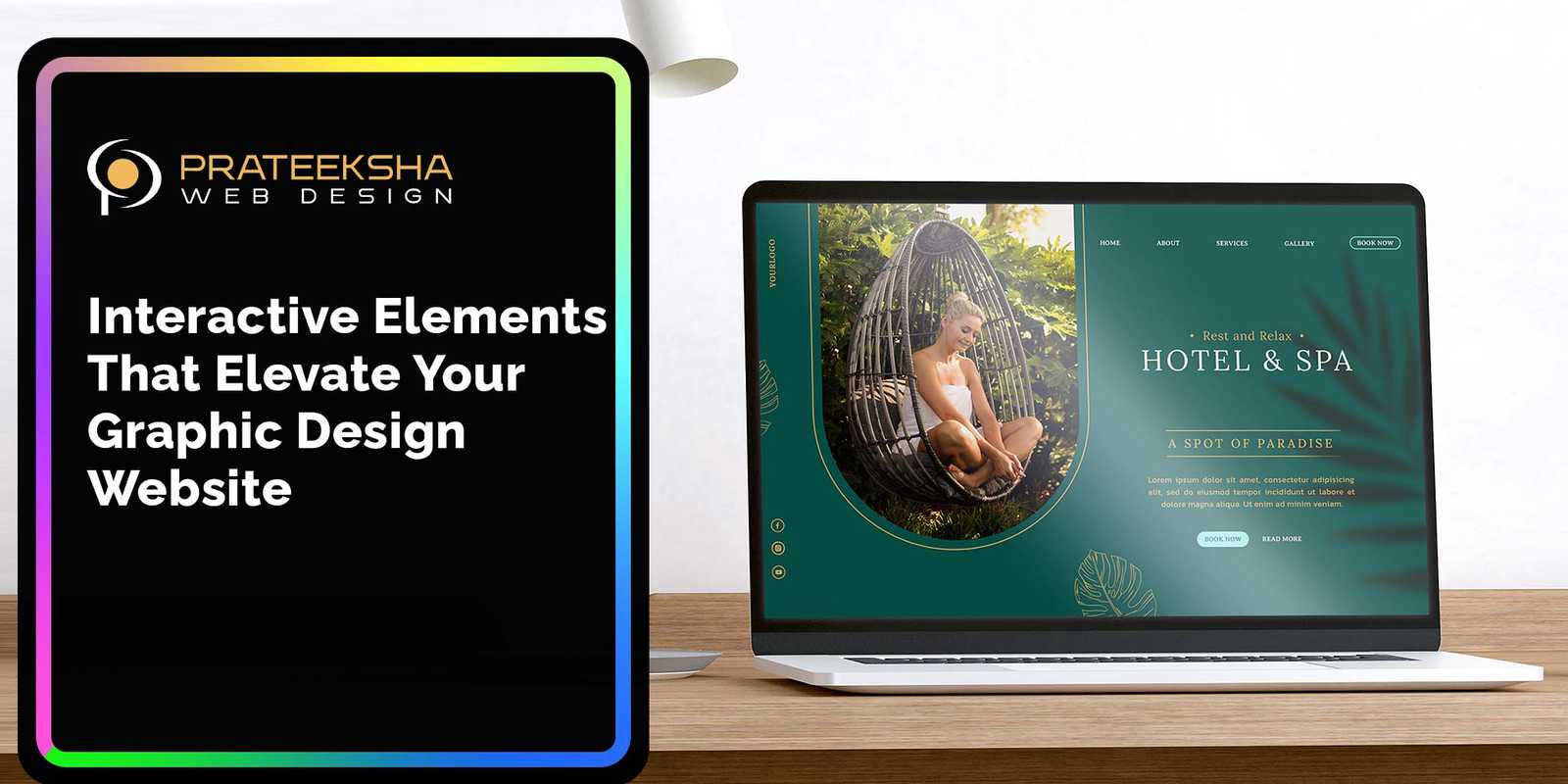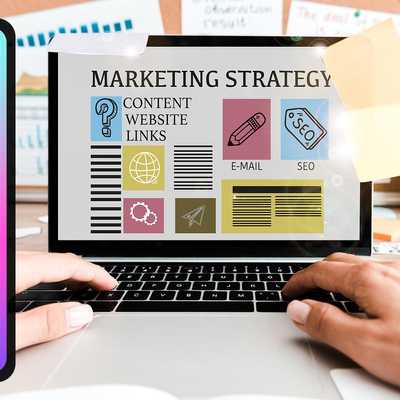The Ultimate Guide to Building a Graphic Designer Portfolio Website: Provide a step-by-step guide on how to create an impactful online portfolio that showcases a graphic designer's work effectively.
Top Website Features Every Graphic Designer Needs: Discuss essential website functionalities and features that benefit graphic designers, such as high-quality image galleries, responsive design, and contact forms.
Innovative Web Design Trends for Graphic Designers: Highlight the latest web design trends and how graphic designers can incorporate them into their websites to stand out.
Creating a Brand Identity for Your Graphic Design Website: Discuss the importance of a cohesive brand identity on a website and provide tips for graphic designers to develop and implement one.
Why Every Graphic Designer Should Blog: Benefits and Tips: Explore the advantages of blogging for graphic designers, including establishing expertise, improving SEO, and engaging potential clients.
Integrating Social Media into Your Graphic Design Website: Provide strategies for effectively linking a website with social media profiles to increase visibility and engage with a broader audience.
E-commerce for Graphic Designers: Selling Your Work Online: Guide graphic designers on setting up an e-commerce platform on their websites to sell their work or services directly.
Responsive Design: Essential for Graphic Designer Websites: Highlight the importance of responsive design for graphic designers' websites, ensuring their portfolio looks great on any device.
In the digital era, your website is often the first impression potential clients get of your business. As a graphic designer, your site isn't just an online business card, it's a showcase of your skills and talent. It's your portfolio, your sales pitch, and your brand all rolled into one.
In this regard, a Graphic Design Website needs to be more than just aesthetically pleasing. It also needs to be engaging, interactive, and user-friendly. Interactive elements can enhance the user experience, making your website not only more enjoyable to navigate but also more effective at converting visitors into clients.
What Are Interactive Elements?
Interactive elements are parts of a website that users can engage with. These can range from simple elements such as buttons and forms to more complex features like sliders, animations, and interactive infographics.
These elements not only add visual interest to your website but also encourage user engagement. When used correctly, they can guide users through your site, highlight important information, and make your content more memorable.
In the context of a Graphic Design Website interactive elements can also serve as a demonstration of your design skills. By incorporating unique and innovative interactive features into your site, you can show potential clients what you're capable of.
Recent Advancements in Web Design Technology
In recent years, the technology behind web design has advanced significantly. New coding languages and frameworks have made it possible for designers to create more complex and interactive websites.
For example, HTML5 and CSS3 introduced a range of new features and capabilities, including animations, transitions, and transformations. JavaScript, particularly with libraries such as jQuery, has also become a powerful tool for creating interactive elements.
Interactive Elements That Can Elevate Your Graphic Design Website
Let's explore some interactive elements that can take your Graphic Design Website to the next level.
1. Animated Transitions
Animated transitions can add a dynamic touch to your website. They can make your site feel more fluid and cohesive, guiding users from one section or page to another.
For example, you might use animated transitions to smoothly reveal your portfolio pieces, one by one, as users scroll down your portfolio page.
2. Interactive Sliders
Interactive sliders are a great way to showcase your work in an engaging way. Users can slide through your portfolio pieces, getting a quick overview of your work.
You can also use sliders to display client testimonials, services, or any other information that you want to highlight.
3. Hover Effects
Hover effects can add a layer of interactivity to your website. They can be used to reveal additional information, highlight links, or simply add a visual touch to your site.
For example, you might use hover effects to show a brief description of each portfolio piece when users hover over its thumbnail.
4. Interactive Infographics
Interactive infographics can make your content more engaging and easier to understand. Users can interact with the infographic to explore the data or information in more depth.
For instance, if you offer a range of design services, you might create an interactive infographic that breaks down the process for each service.
5. Scroll-Triggered Animations
Scroll-triggered animations can make your website more dynamic and engaging. These animations are triggered as users scroll down the page, adding a sense of depth and movement to your site.
For example, you might use scroll-triggered animations to make your portfolio pieces appear to "fade in" or "slide in" as users scroll down your portfolio page.
The Ultimate Guide to Building a Graphic Designer Portfolio Website
The digital space has become the go-to platform for showcasing talent, especially for creative professionals like graphic designers. A well-curated online portfolio not only showcases your work but also sets the tone for your brand, personality, and skills. It acts as a dynamic CV that can attract potential clients or employers. Here's the ultimate step-by-step guide to building a graphic designer portfolio website that effectively showcases your work.
Step 1: Choose the Right Platform
There are several platforms available for building a portfolio website. Some popular ones include WordPress, Squarespace, Wix, and Behance. These platforms offer a range of customizable templates and easy drag-and-drop interfaces.
While choosing a platform, consider factors like ease of use, flexibility, design options, and cost. WordPress, for example, offers more flexibility and a vast array of plugins, but it has a steeper learning curve compared to Wix or Squarespace.
Step 2: Select and Organize Your Work
The next step is to select and organize your work. As a graphic designer, you probably have a plethora of projects to choose from. However, remember that quality trumps quantity. Select projects that showcase your best work, versatility, and range of skills.
Organize your work in a way that's easy for visitors to navigate. You could categorize your projects based on the type of work (logos, branding, web designs, etc.), industry, or clients.
Step 3: Create Engaging Project Pages
Each project in your portfolio deserves its own page. This is where you can really dive into the details of your work. Include a mix of final designs, sketches, mockups, and behind-the-scenes images to give viewers an insight into your creative process.
In addition to the visuals, write a brief description for each project. Describe the client, the project objectives, your role, the tools and techniques used, and the results achieved. This will help potential clients or employers understand your problem-solving skills and approach to design.
Also, don't forget to include a professional photo of yourself. This adds a personal touch and helps establish trust with your audience.
Step 4: Make It Easy to Contact You
One of the main purposes of your portfolio is to generate leads or job offers. So, make it easy for visitors to contact you. Include a 'Contact' page with your email address, phone number, and links to your social media profiles. You could also include a contact form for visitors to reach out to you directly from your website.
Step 5: Test and Launch Your Website
Before you launch your website, make sure to test it thoroughly. Check how it looks on different devices and browsers. Make sure all the links, images, and forms work correctly.
Once you're satisfied with everything, it's time to launch your website. Share it on your social media platforms, email it to your contacts, and add it to your LinkedIn profile.
Step 6: Regularly Update and Review Your Website
Building your portfolio website is not a one-time task. Regularly update it with your latest work. Regularly review and tweak it based on feedback, analytics, and changes in your goals or target audience.
Top Website Features Every Graphic Designer Needs
In the digital age, your online presence is as vital as your offline presence. As a graphic designer, your website is your digital portfolio, a showcase, and a business card all wrapped into one. It is the first point of contact for potential clients and employers, so it is crucial that it reflects your skills, style, and personality. To create a website that leaves a lasting impression, you need to incorporate essential features that not only enhance the user experience but also serve your professional needs.
1. High-Quality Image Galleries
As a graphic designer, your work is visual by nature. A high-quality image gallery is therefore a must-have feature. It allows you to display your designs and artworks in the best possible light, showcasing the level of detail and complexity in your works.
There have been significant advancements in image gallery technology in recent years. One such advancement is the use of advanced image compression algorithms, which allow for high-resolution images to be displayed without slowing down the website's load time. This is crucial, as slower websites can deter visitors.
2. Responsive Design
Responsive design is another crucial feature. In simple terms, this means that your website should look and function well on any device, from desktops and laptops to tablets and smartphones. This is important because people are increasingly using mobile devices to browse the internet.
Responsive design is not just about resizing and fitting elements into different screen sizes. It is about optimizing the user experience for each device. For example, the menu might be displayed differently on a mobile device for easy navigation, or the images might be stacked vertically instead of being displayed side by side.
3. Contact Forms
Without a doubt, your website's ultimate goal is to get you hired for graphic design projects. Therefore, it should make it easy for potential clients or employers to get in touch with you. A contact form is an effective way to achieve this.
Contact forms allow visitors to send you a message directly from your website. This is more convenient than having to open up their email client. It also eliminates the need to publicly display your email address, which can attract spam.
Innovative Web Design Trends for Graphic Designers
The digital landscape is continuously evolving, and with it, the trends in web design. As a graphic designer, it's imperative to stay updated with the latest web design trends to ensure your work remains relevant and engaging. This blog post will delve into some of the most innovative web design trends and how graphic designers can incorporate them into their designs for a unique, standout website.
The Rise of Dark Mode
Dark mode is increasingly becoming a popular trend on various platforms, and it's now making waves in web design. Dark themes offer a modern, sleek look that's easy on the eyes, especially in low-light conditions. They also allow other design elements to pop, making for a more visually appealing site.
As a graphic designer, you can leverage the dark mode trend by incorporating dark backgrounds into your web designs. For instance, use dark shades for your site's primary theme, then add bright colors for buttons, icons, or other key elements to create contrast and guide the user's eye.
Minimalist Design with Bold Typography
Minimalism has been a significant trend in web design for some time now, and it shows no signs of slowing down. Minimalist designs are clean, simple, and focus on functionality, making it easier for users to navigate and find what they're looking for.
One interesting aspect of this trend is the use of bold typography. Bold, large fonts can create a powerful visual impact and draw attention to key messages. As a graphic designer, you can pair minimalist design with bold typography to create a modern, stylish website. Use simple, clean lines and lots of white space, then add large, bold fonts for headers or key phrases.
3D Elements and Animations
3D technology has become more accessible, bringing about a rise in 3D elements and animations in web design. These elements can create a more immersive, interactive user experience, making your website more engaging and memorable.
Incorporating 3D elements into your web designs can be a game-changer. Use 3D animations for product showcases or interactive elements to engage users. However, remember to keep it balanced and not overload your site with too many 3D elements, as this can slow down your site and frustrate users.
Micro-Interactions
Micro-interactions are small, subtle animations or design elements that react to the user's actions. They can make a website feel more interactive and responsive, improving the overall user experience.
As a graphic designer, you can incorporate micro-interactions into your web designs to make your site more engaging. For instance, a button could change color or animate when hovered over or clicked. These small details can make a big difference in how users perceive and interact with your site.
Augmented Reality (AR)
AR is an emerging web design trend that's shaking up the digital world. AR can create immersive, interactive experiences, bringing your website to life and engaging users in a whole new way.
Incorporating AR into your web designs can be challenging, but the payoff can be significant. Consider using AR for product previews, interactive tours, or other creative applications. This trend is still relatively new and not widely adopted, so it could give your website a unique edge.
Why Every Graphic Designer Should Blog: Benefits and Tips
1. Establishing Expertise
Blogging allows graphic designers to share their knowledge and insights on design trends, project case studies, and industry best practices. This not only positions them as authorities in their field but also builds trust with potential clients.
2. Engaging Potential Clients
A well-maintained blog can turn a passive visitor into an engaged prospect. By offering valuable content, designers can encourage visitors to spend more time on their site, engage with their content through comments, and share posts on social media.
3. Building a Community
Blogging creates a platform for interaction with peers, clients, and potential customers. By sharing insights and engaging in discussions, designers can build a community around their brand.
Tips for Graphic Designers to Blog Effectively
1. Identify Your Niche
Focus on areas where you have expertise or a unique perspective. Whether it's logo design, web graphics, or animation, tailoring your content to your niche will attract a more engaged audience.
2. Use High-Quality Images
As a graphic designer, your blog must visually impress. Use high-quality images of your work, and consider incorporating videos or infographics to break up text and add value.
3. Share Your Creative Process
Readers love behind-the-scenes glimpses. Share your creative process, challenges faced, and how you overcame them. This not only showcases your problem-solving skills but also humanizes your brand.
Integrating Social Media into Your Graphic Design Website
1. Social Media Icons
Place social media icons in prominent locations on your website, such as the header, footer, or sidebar. Ensure they're visible on every page to encourage visitors to follow you.
Use icons that match your website’s design aesthetic. Custom icons can blend seamlessly with your site's theme while still being recognizable.
2. Social Media Feeds
Embedding live social media feeds on your site keeps your content fresh and shows visitors your active social presence. Consider placing a Twitter feed in the sidebar or an Instagram gallery in the footer.
For graphic designers, showcasing your latest work from platforms like Instagram directly on your portfolio page can provide dynamic updates and highlight your most recent projects.
3. Social Sharing Buttons
Include social sharing buttons on each blog post to encourage visitors to share your content on their social networks. This can significantly increase the reach of your work.
Allow visitors to share your portfolio projects on their social media. Each share increases your visibility and can lead to new client inquiries.
4. Social Media-Based Comments
Integrating social media commenting systems (like Facebook Comments) can increase engagement, as comments made on your site can also appear on visitors’ Facebook timelines, further increasing your reach.
Using social media to facilitate comments often reduces spam and makes it easier for users to engage since they don't need to create a new account.
5. Social Media as a Contact Option
Offer the option to contact you through social media platforms. Many clients find direct messaging on platforms like Instagram or LinkedIn more convenient than traditional emails or contact forms.
Utilize your social media bios, especially on Instagram and Twitter, to link back to your website, driving traffic from those platforms to your site.
E-commerce for Graphic Designers: Selling Your Work Online
1. Choosing the Right E-commerce Platform
Research: Compare platforms like Shopify, WooCommerce (for WordPress sites), and BigCommerce to find one that fits your needs in terms of ease of use, customization, and fees.
Integration: Ensure the platform can be seamlessly integrated into your existing website or consider a redesign that accommodates e-commerce functionality.
2. Setting Up Your Store
Product Listings: Create detailed listings for your products or services, including high-quality images, descriptions, and prices. For digital goods, clarify the format and any usage rights.
Payment Processing: Set up a secure payment gateway. Options like PayPal, Stripe, and Square are popular and trusted by consumers worldwide.
3. Managing Orders and Customer Service
Fulfillment: Have a clear process for fulfilling orders, especially for physical goods, which will require shipping.
Support: Provide excellent customer service, including a FAQ section and easy ways for customers to contact you with questions or issues.
Responsive Design: Essential for Graphic Designer Websites
1. The Importance of Responsive Design
User Experience: A responsive design ensures that visitors have a positive experience on your site, whether they’re on a desktop, tablet, or smartphone.
SEO Benefits: Google prioritizes mobile-friendly websites in its search rankings. A responsive design is key to improving your site’s visibility.
2. Testing and Optimization
Continuous Testing: Regularly test your site’s responsiveness on various devices and browsers to identify and fix any issues.
Feedback Loop: Gather feedback from users about their experience on different devices and make adjustments as needed.
3. Best Practices
Minimalism: Embrace a clean, minimal design that loads quickly and emphasizes your work without unnecessary distractions.
Typography: Ensure text is easily readable on small screens by using legible fonts and adjusting sizes and spacing for mobile devices.




